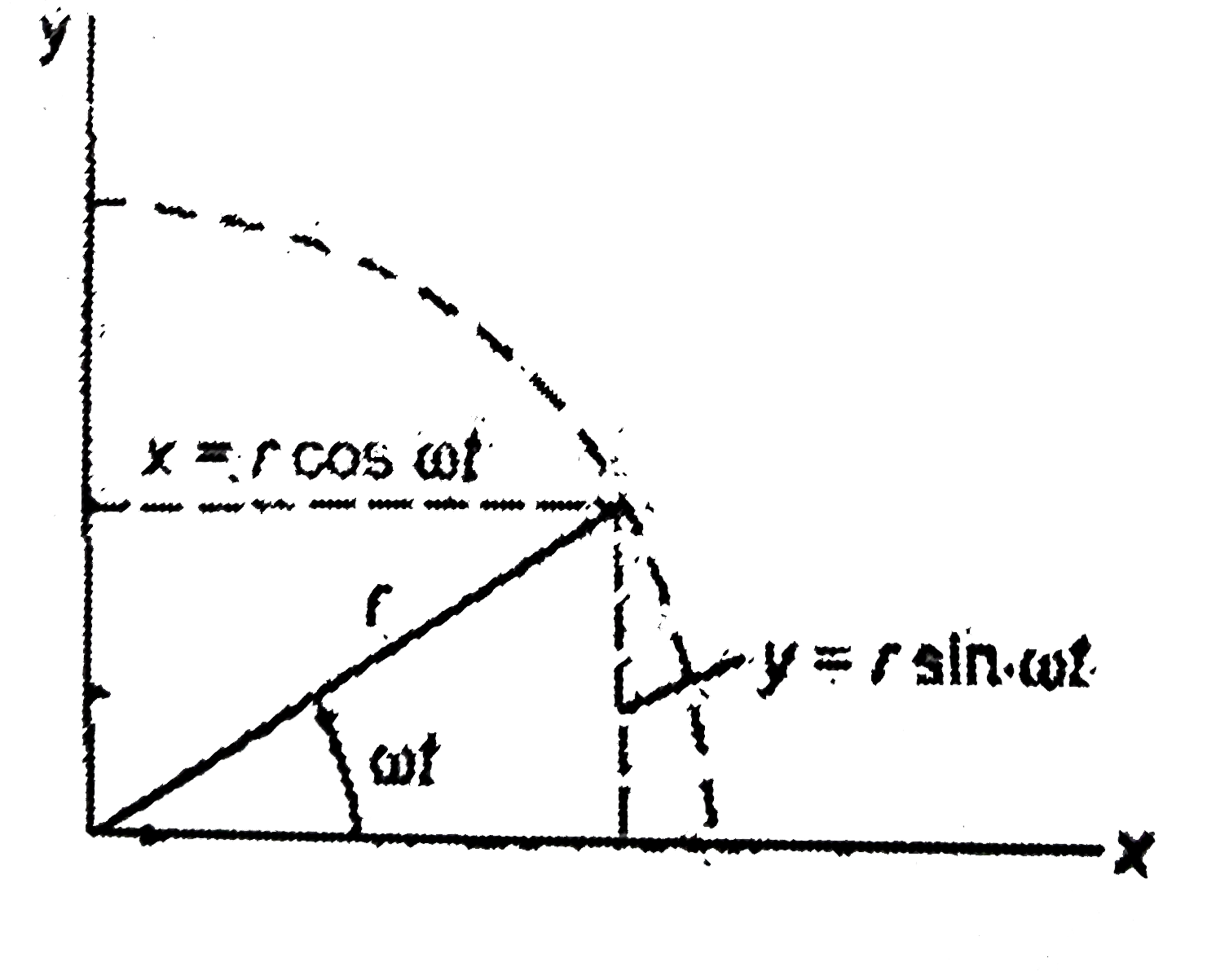A particle moves in the x-y plane under is influence of a force such that its linear momentum is →P(t)=A[ˆicos(kt)−ˆjsin(kt)], where A and k are constants Angle between the force and the momentum is:
0∘
30∘
45∘
90∘
The correct Answer is:D
→F=d→Pdt
Topper's Solved these Questions
- FORCE AND NEWTONS LAWS OF MOTIONBook:GRB PUBLICATIONChapter:FORCE AND NEWTONS LAWS OF MOTIONExercise:More than one choice is correct
Explore 15 Videos
- FORCE AND NEWTONS LAWS OF MOTIONBook:GRB PUBLICATIONChapter:FORCE AND NEWTONS LAWS OF MOTIONExercise:Assertion- Reason
Explore 4 Videos
- FORCE AND NEWTONS LAWS OF MOTIONBook:GRB PUBLICATIONChapter:FORCE AND NEWTONS LAWS OF MOTIONExercise:Problem for practice
Explore 30 Videos
- BASIC MATHEMATICSBook:GRB PUBLICATIONChapter:BASIC MATHEMATICSExercise:Problems For Practice
Explore 35 Videos
- FRICTION AND CIRCULAR MOTION Book:GRB PUBLICATIONChapter:FRICTION AND CIRCULAR MOTION Exercise:Comprehension type
Explore 11 Videos
Similar Questions
A particle moves in the x-y plane under the action of a force →F such that the value of its linear momentum →P at any time t is Px=2 cost and py=2sint. What is the angle θ between →F and P at a given time t?
View SolutionA particle of mass m moves in xy plane such that its position vector, as a function of time, is given by →r=b(kt−sinkt)ˆi+b(kt+coskt)ˆj. where b and k are positive constants. (a) Find the time t0 in the interval o≤t≤πk when the resultant force acting on the particle has zero power. (b) Find the work done by the resultant force acting on the particle in the interval to≤t≤π4
View Solution
Knowledge Check
A particle moves in the xy plane under the influence of a force such that its linear momentum is →P(t)=A[ˆicos(kt)−ˆjsin(kt)], where A and k are constants. The angle between the force and momentum is
A0∘B30∘C45∘D90∘A particle moves in the X-Y plane under the influence of a force such that its linear momentum is →p(t)=A[ˆicos(kt)−ˆjsin(kt)], where A and k are constants. The angle between the force and the momentum is
A0∘CB30∘C45∘D90∘A particle moves in the x-y plane under the action of a force →F such that the value of its linear momentum →P at any time t is Px=2 cost and py=2sint. What is the angle θ between →F and P at a given time t?
Aθ=0∘Bθ=30∘Cθ=90∘Dθ=180∘
Consider a particle moving in the x−y plane according to r=r(cosωtˆi+sinωtˆj), where r and ω are constants. Find the trajectory, the velocity, and the acceleration.

View SolutionThe position vector of a particle is given by →r=kcosωˆi+ksinωˆj=xˆi+yˆj, where k and ω are constants and t time. Find the angle between the position vector and the velocity vector. Also determine the trajectory of the particle.
View SolutionA particle moves in the x-y plane under the action of a force →F such that the components of its linear momentum →P at any time t are px=costandpy=3sint. What is the magnitude of the vector →F?
View SolutionF particle moves in x-y plane under the action of force →F such that the value of its linear momentum (→p) at any instant t is px=2 cos t and py=2 sin t. The angle θ between →F→P at a given time t will be-
View SolutionA particle of mass 2kg moves in the xy plane under the action of a constant force →F where →F=ˆi−ˆj. Initially the velocity of the particle is 2ˆj. The velocity of the particle at time t is
View Solution

